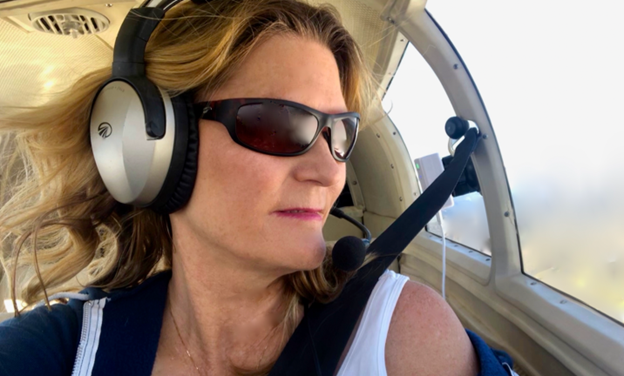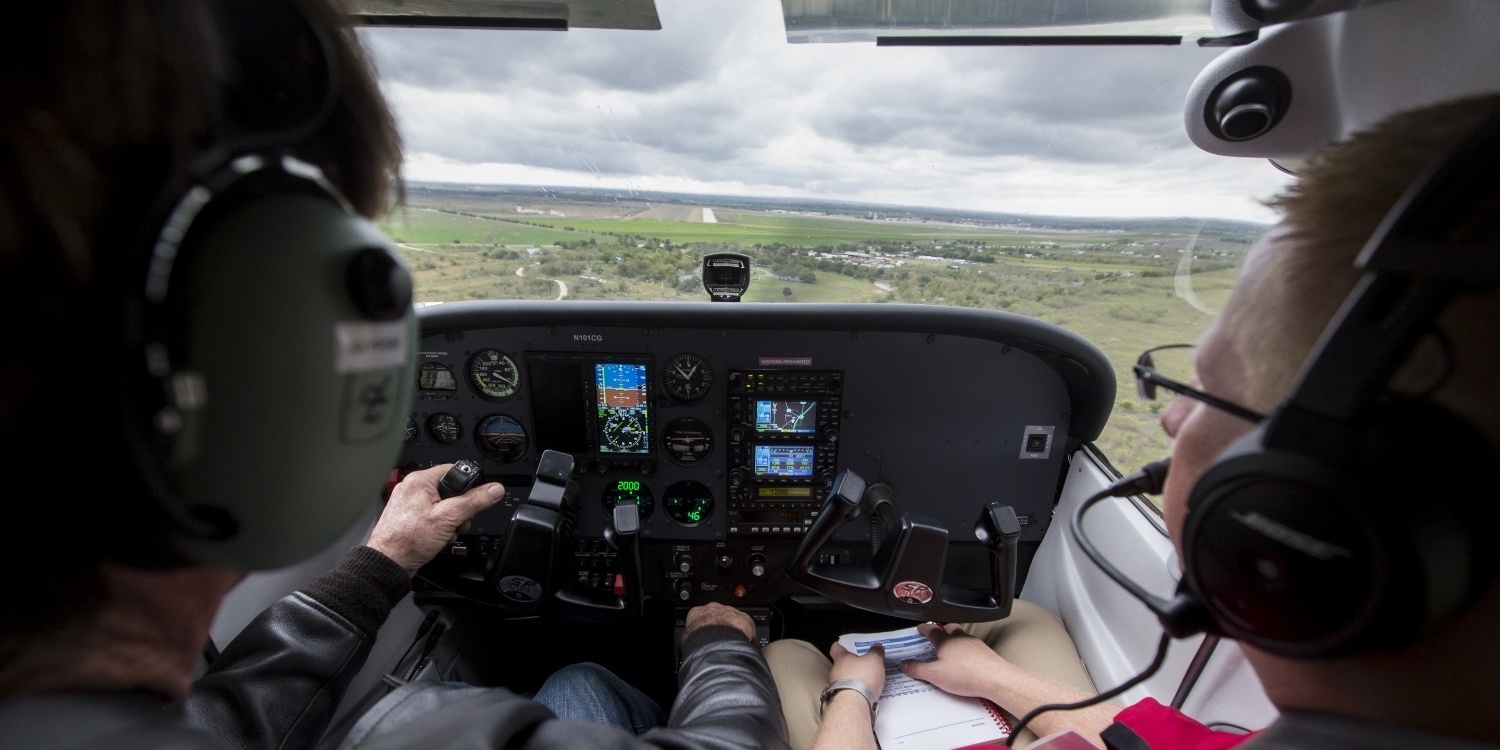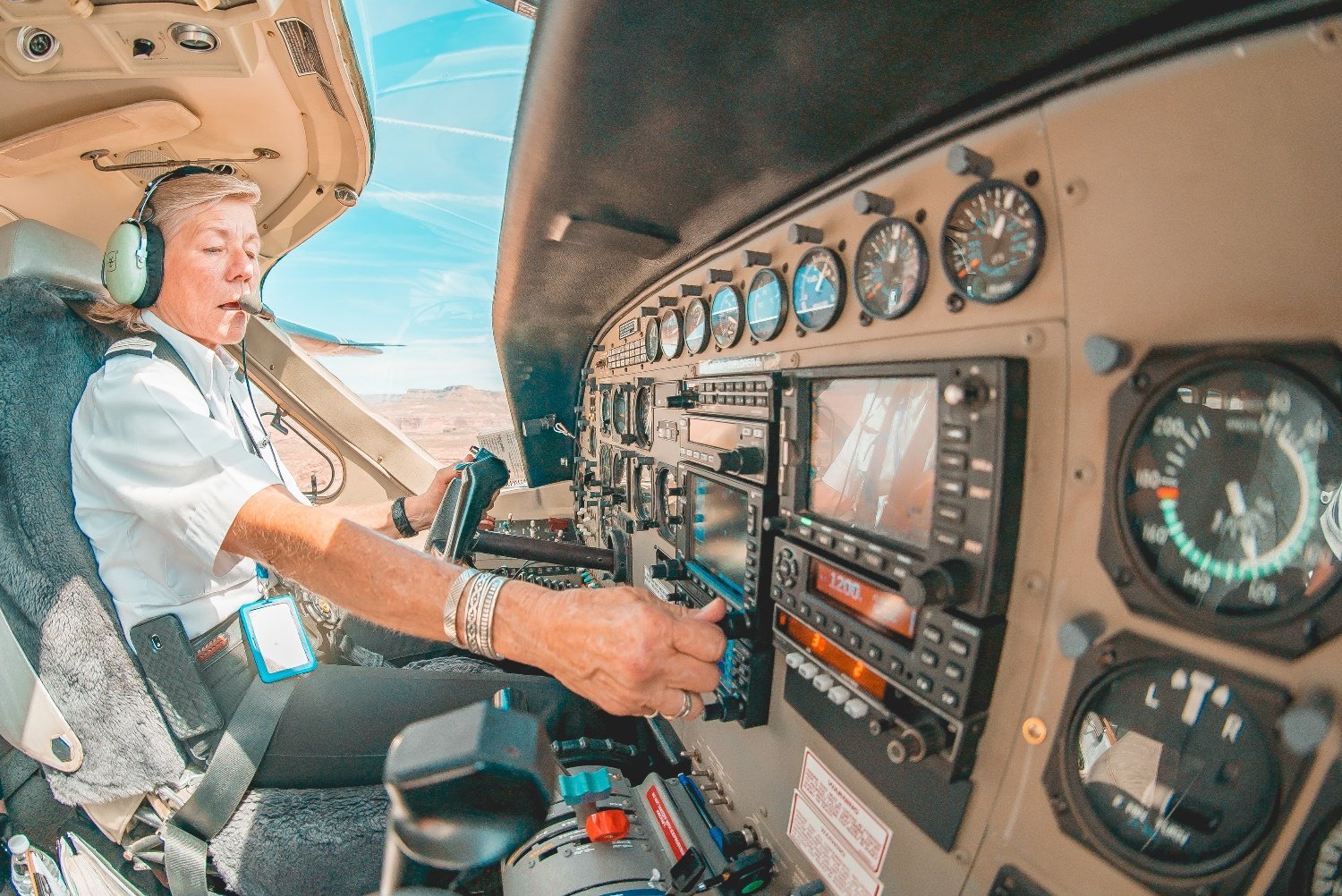Adapting to the Commercial ACS and Pro Pilot Norms
In 2020, I decided it was the year to complete my commercial pilot certificate. Given the unforeseen circumstances of a global pandemic, studying or flying with a certified flight instructor (CFI) after a long workday took a lot of determination and concentration. Yet I am happy to report that on July 5, 2020, I passed my commercial pilot checkride in the beautiful Columbia River Gorge, where I learned to fly some 18 years ago.
Later that year, I flew another roundtrip to Oregon, 90% of which was in instrument meteorological conditions (IMC) due to the massive wildfires in California. My route was right up the gut of the Golden State in between the temporary flight restrictions (TFRs) and into Oregon.
The conditions in the Northwest were not much better as wind-driven wildfires began to pop up in Central Oregon. Hand-flying five hours on instruments in my Mooney M20E with no autopilot is mentally exhausting.
On the way up, en route to a fuel stop in Central California, I flew an area navigation (RNAV) approach in dense smoke with airport contact only 30 feet above minimums. I was never happier to see a visual approach slope indicator (VASI). I departed via the obstacle departure procedure (ODP) and was relieved to climb above the smoke at 8,000 feet.
The visibility on the trip home was much worse. In the five and a half hours of flying, I only had ground references for the first and last 30 minutes. As I shot the RNAV into a fuel stop at Yuba County Airport (KMYV), I was grateful that I had terrific flight instruction, a solid platform for instrument flight rules (IFR) in the Mooney, and the ability to (mostly) focus my attention inside the airplane.
Commercial flying requires another layer of thinking

Flying in IMC requires mental discipline, the ability to follow instructions from air traffic control (ATC), and constant focus on your instrument scan. Flying with commercial pilot privileges requires additional proficiency in looking outside, focusing on smooth flying, and keeping your passengers comfortable.
I am not suggesting that instrument and commercial flying do not share characteristics. However, I feel like I use different parts of my brain to adjust to the nuances required by each. Whereas the instrument rating requires inward-looking precision, the commercial pilot certificate requires outward-looking mastery.
On one of the last days of my commercial pilot training, I flew from the LA Basin (Fullerton Municipal Airport [KFUL]) to French Valley Airport (F70). When I was flight planning for this short hop, I noted the location of the freeways, surrounding terrain, lake, factory, and direction of the airport from town. As usual, I had my iPad onboard loaded with ForeFlight and the GNS 530W proudly displaying the magenta line to F70.
About 10 minutes into the flight, my CFI, Mike Jesch, fiendishly turned the 530 to another page and disabled the geo-referencing on the iPad. He said, “Now, what are you going to do?”
What I did next was an example of my instrument training. I slowed the airplane down, centered VORs, and triangulated the airport location based on radials. It took me at least two minutes of looking out, then in, on repeat.
Mike gently said, “Is there anything else you could be looking at, perhaps outside?” Then it dawned on me to locate the freeway I was following, to identify the hills before the airport and the lake off in the distance. I also noted that if this was a real situation on a commercial flight, I would have let ATC know about the failure and asked for a vector to confirm what I saw on the ground.
Flying to commercial pilot standards requires smoothness, precision, and passenger planning. The training is intensive and laser-focused on learning and demonstrating the elements included in the commercial pilot ACS.
Folks had told me I would love flying the “fun” commercial pilot maneuvers: chandelles, steep spirals, lazy eights, power-off 180 landings, steep turns, eights on pylons, etc. However, I did not consciously experience the “fun” part until the last day of training. As I was demonstrating elements for my checkride preparation, I found myself zooming down during a lazy eight and thought, “Yeah, this is fun being totally in control of this airplane.”
As I prepared for my commercial pilot checkride, I noticed a distinct change in my thought process from the mentality of “doing as you planned or are told by ATC” characteristic of instrument flying to what I call “pro pilot thinking.” It was a good thing, too. I needed to think that way during my checkride.
On checkride day, my designated pilot examiner (DPE) gave me the following cross-country scenario.
"So much for an easy fire season—lightning has sparked a big wind-driven fire over by Sandpoint, ID, causing a bit of a panic. Newly hired by a Part 135 group that has extensive Forest Service contracts, you have been tasked to fly two Incident Commanders from your base, The Dalles OR (KDLS), to the Sandpoint airport (KSZT) in your aircraft, where they will join the hastily assembled Hot Shot crews waiting to take on the fire. You have recently noticed that your turn coordinator has been really noisy on startup, but you have not had an opportunity to have it checked out. The firefighters think they weigh around 180 lbs and plan on taking roughly 60 lbs of gear each. They really need to be in Sandpoint by noon, so plan accordingly."
As a private pilot, you would think about the inoperative equipment, weight, fuel, weather, and routing—all critical considerations. However, as a pro pilot, I added a few items.
- Passenger comfort
- Loading of passengers and bags for center of gravity (CG)
- Prevailing weather, wind, smoke conditions
- Efficient route
- Communication with passengers regarding expectations for the flight
- Briefing passengers on safety and emergency equipment
- Route with the least potential for turbulence
- Instrument currency and approaches (if needed)
- Route near airports and highways
- Choosing alternate airports with rental cars and calculating driving distance
- Timing details to get the firefighters to Sandpoint by noon
The bottom line
While the instrument and commercial pilot checkrides differ in many ways, the required knowledge of systems, safe practices, and aeronautical decision-making are very similar.
Instrument flying is challenging due to the lack of visual cues and intense focus inside the airplane. Commercial flying is challenging because you must focus on the safety and comfort of your passengers, who see an airplane as merely a mode of transportation.
Gaining my instrument rating made me a better pilot and opened up my flying life. The commercial pilot certificate opens up the pro-pilot part of my flying career. Both have changed me for the better. A great pilot uses both mastery while looking outside the airplane and thoughtful precision while looking inside.
Share this
You May Also Like
These Related Articles

3 Great Approaches to Get Your Blood Pumping

Commercial Pilot Requirements: A Beginner's Guide
.jpg)
